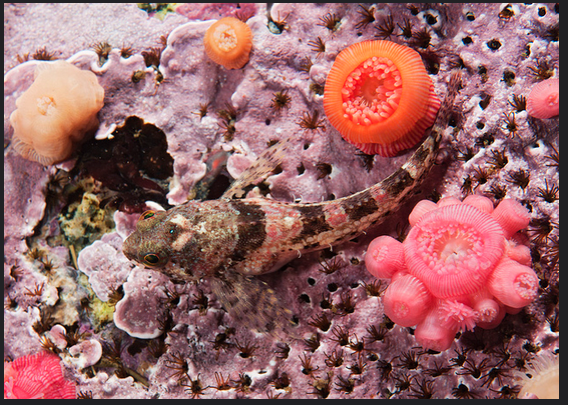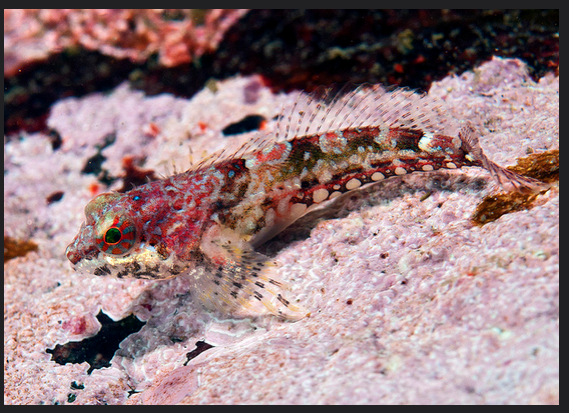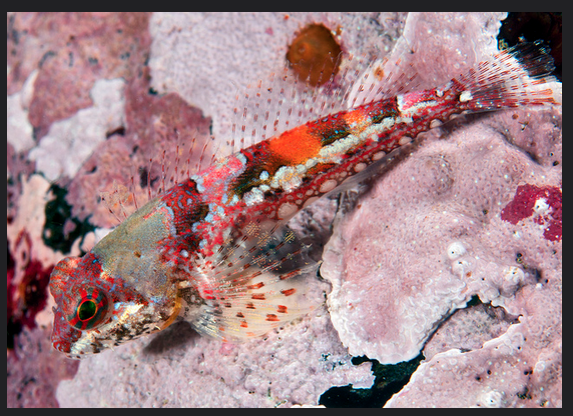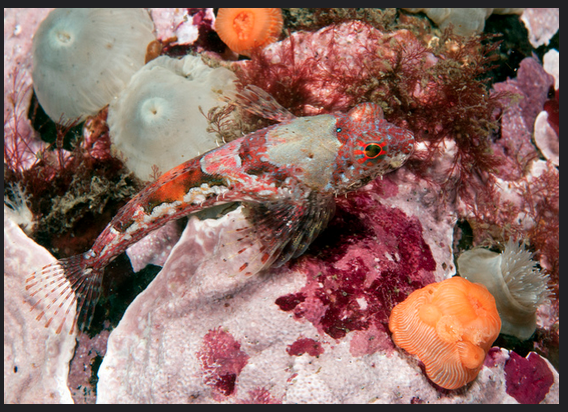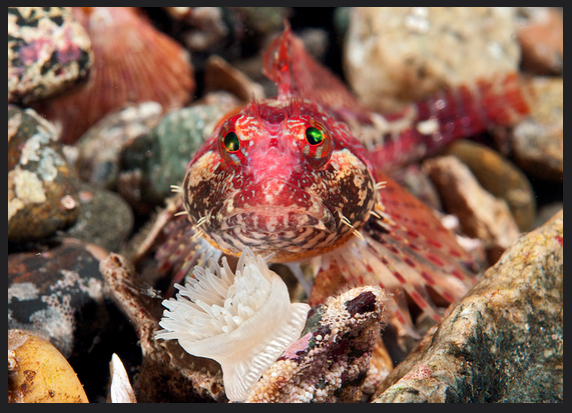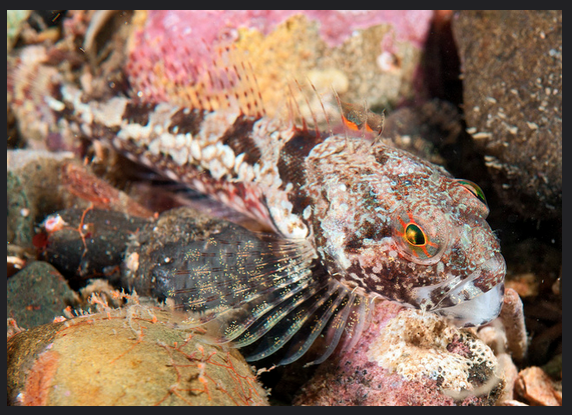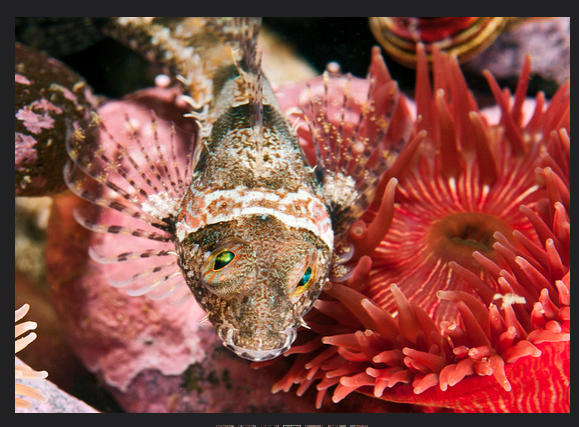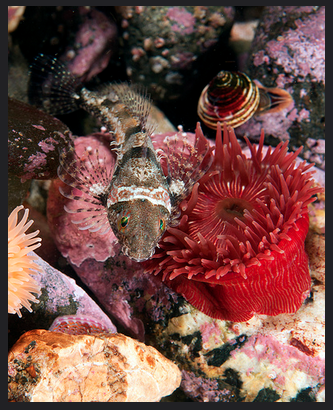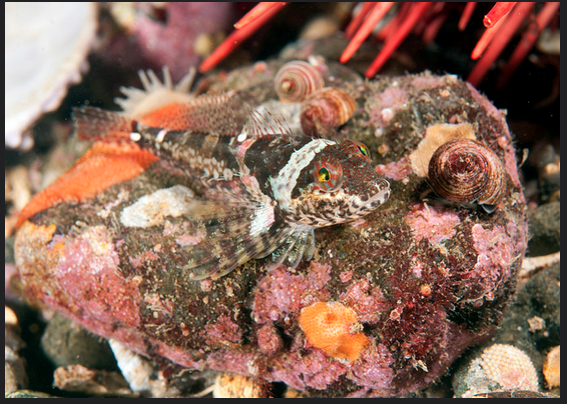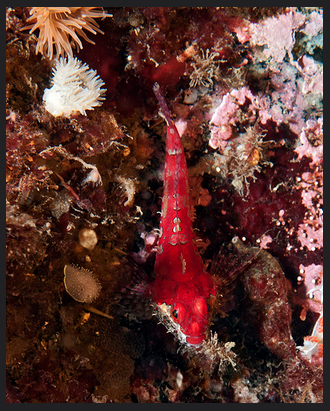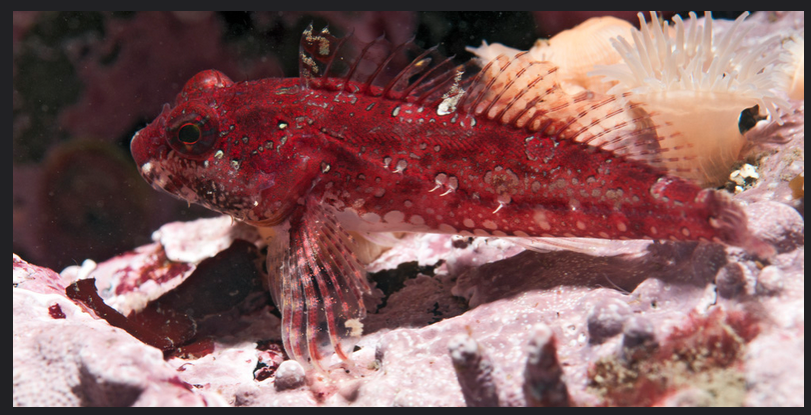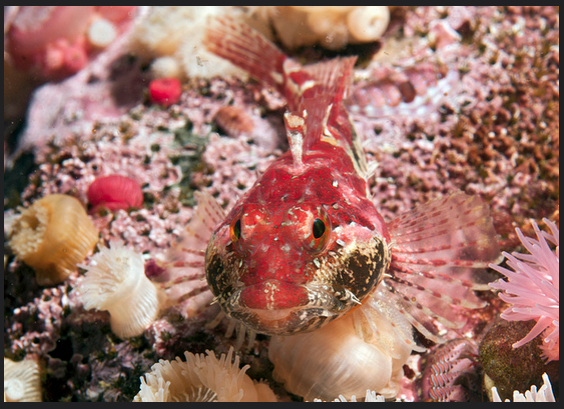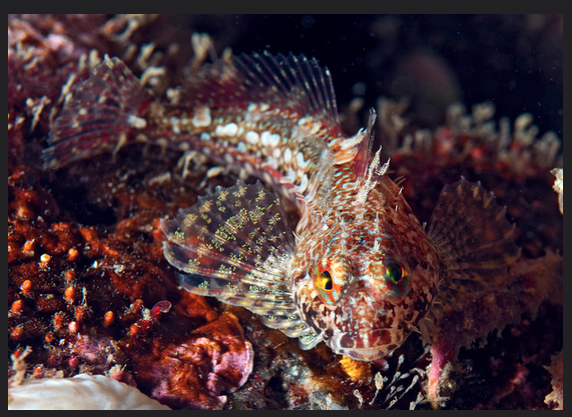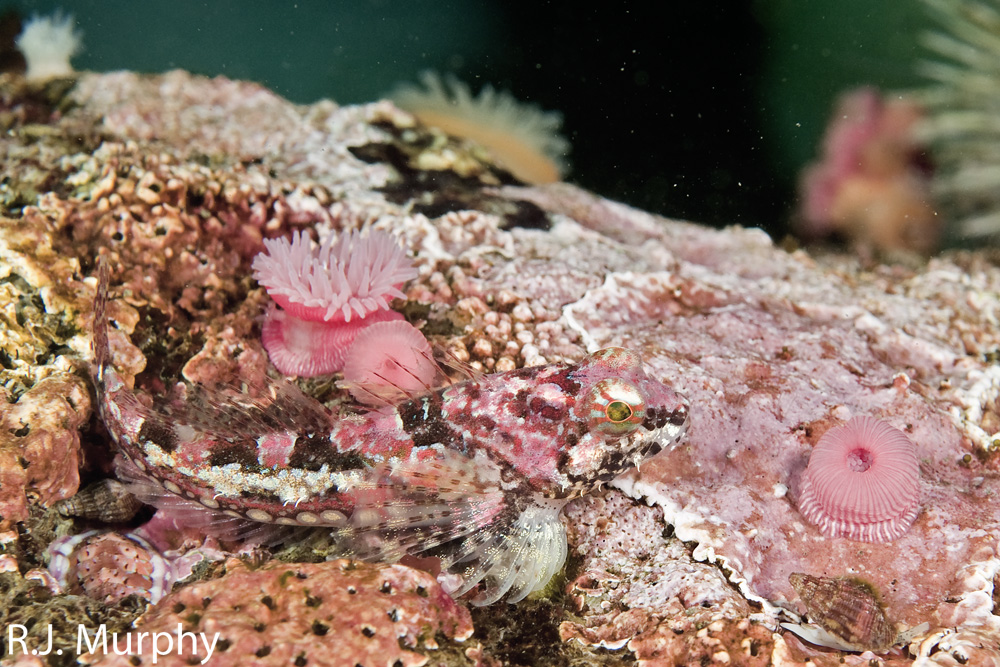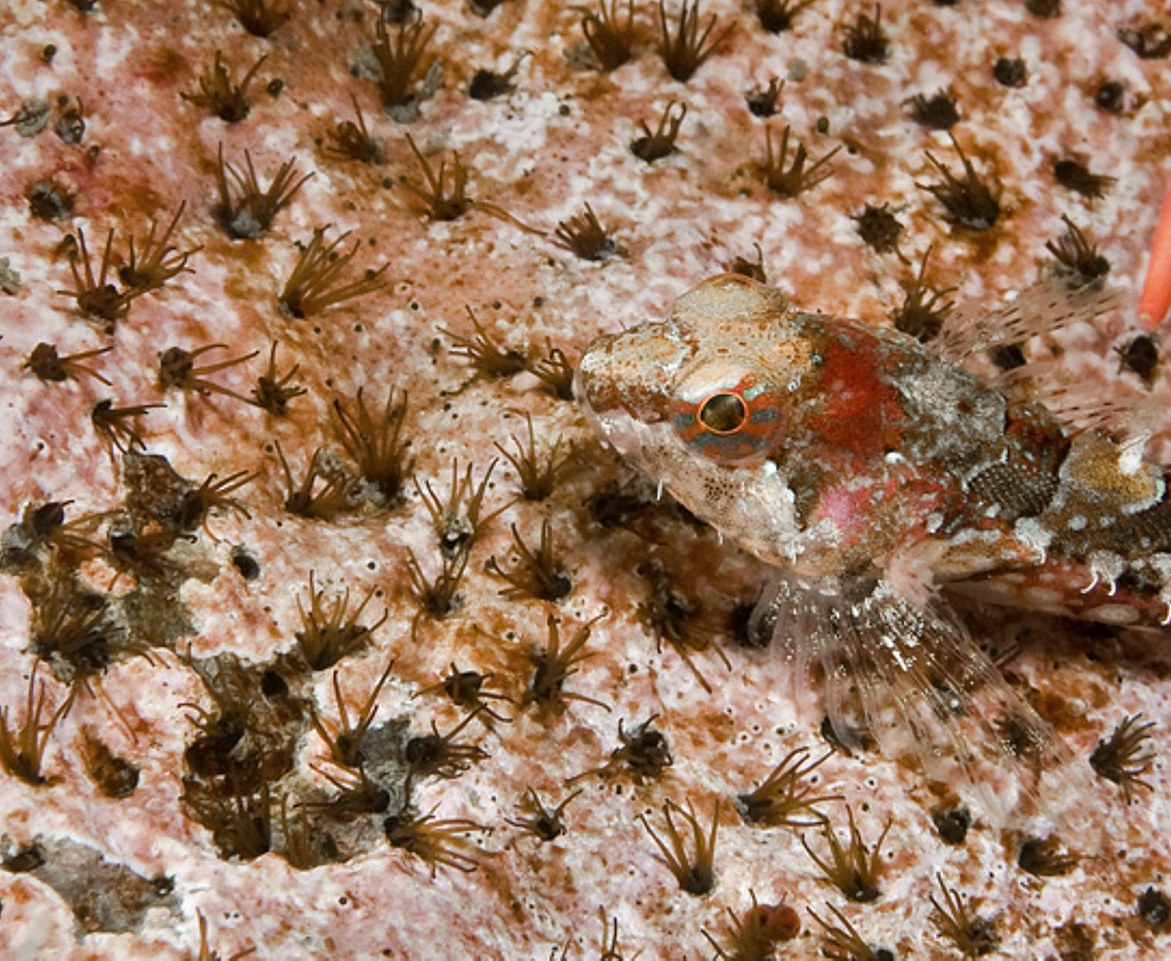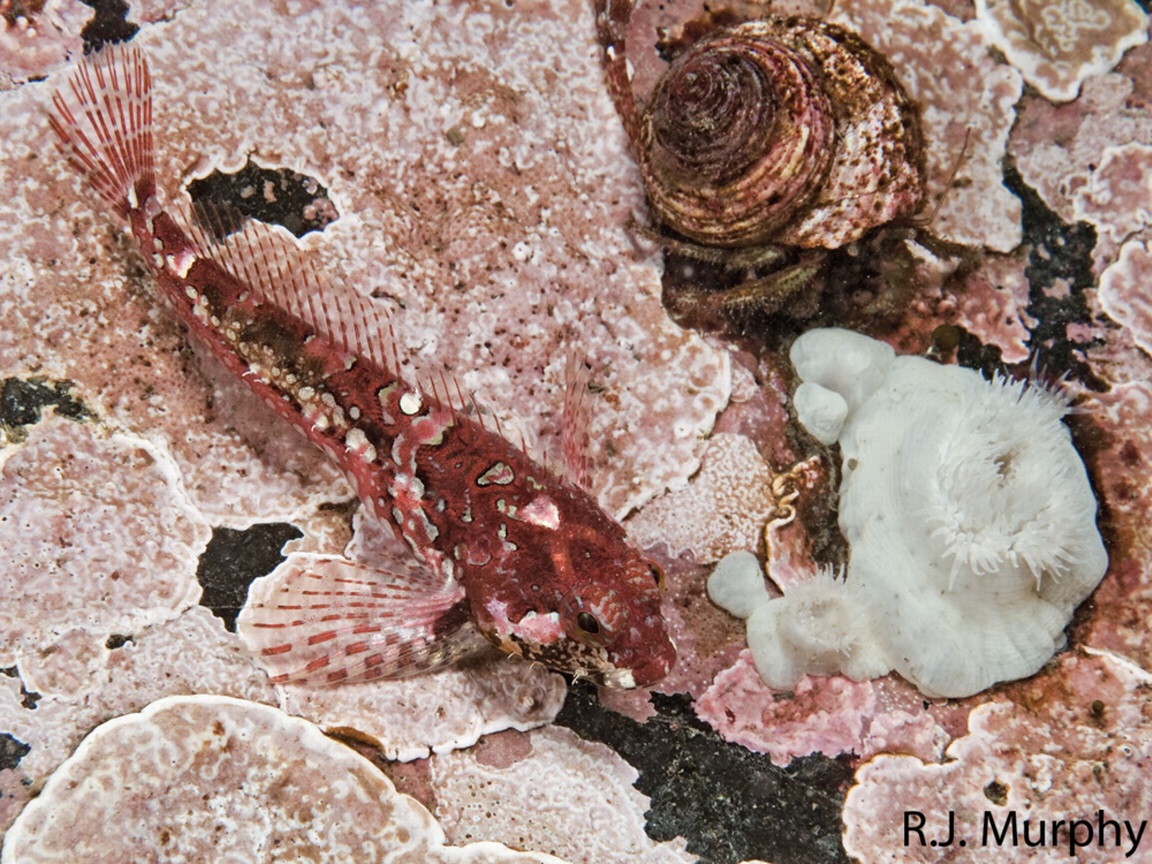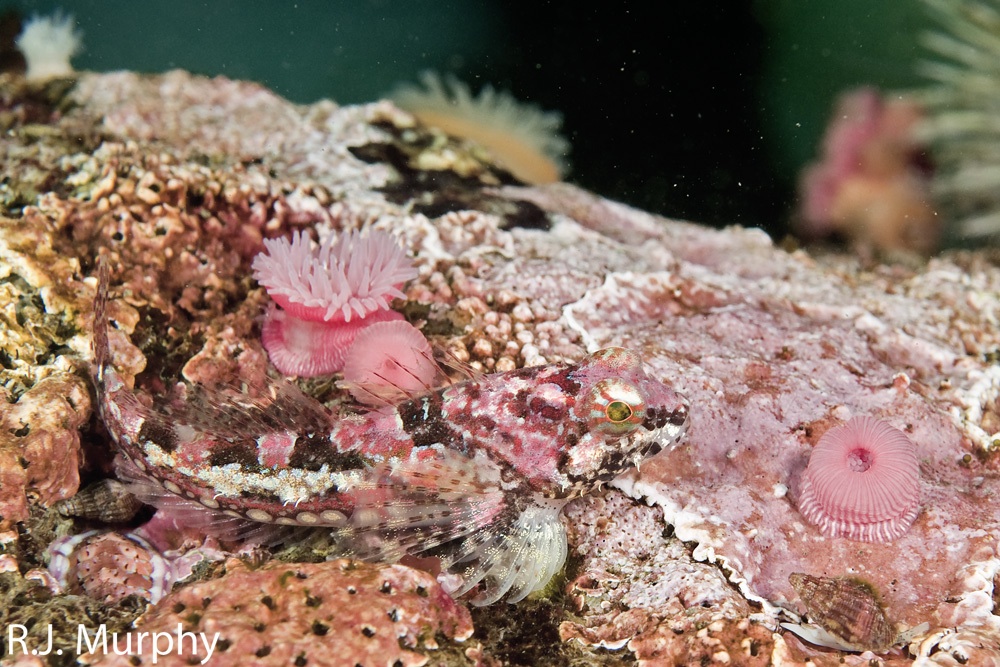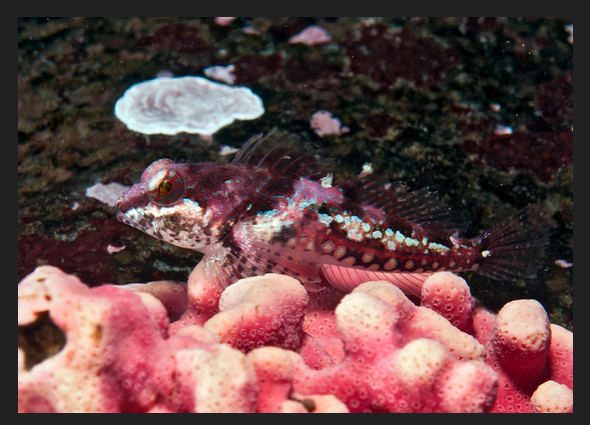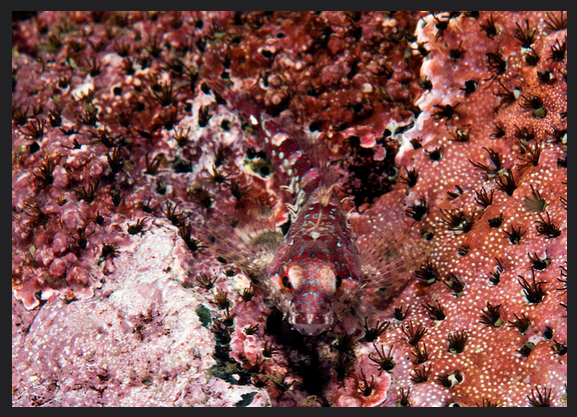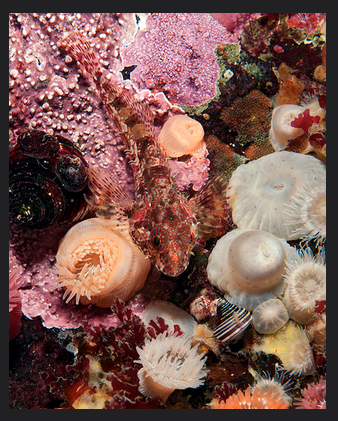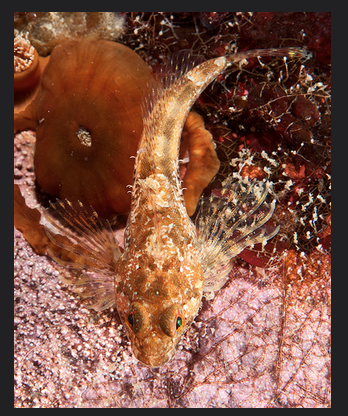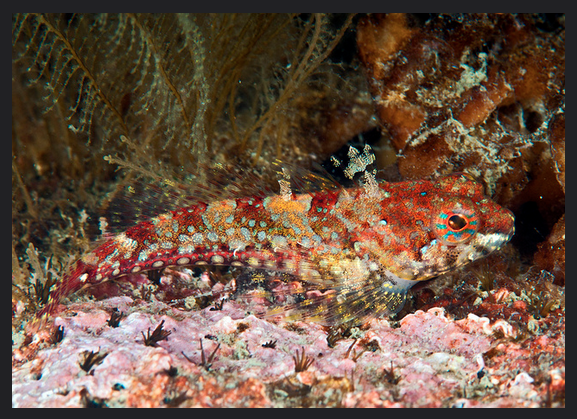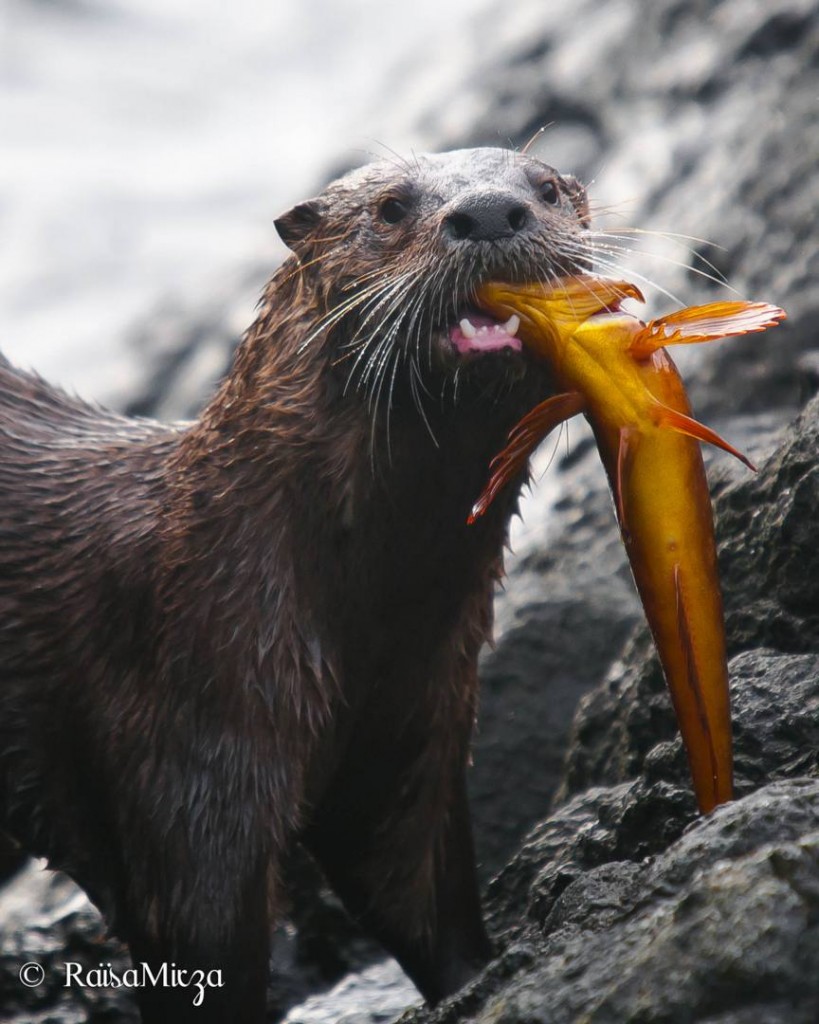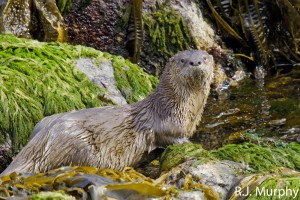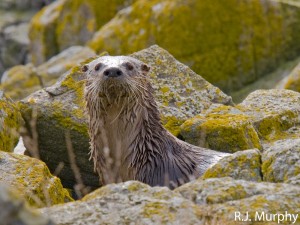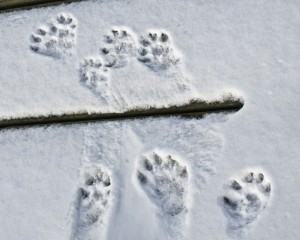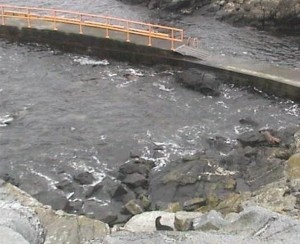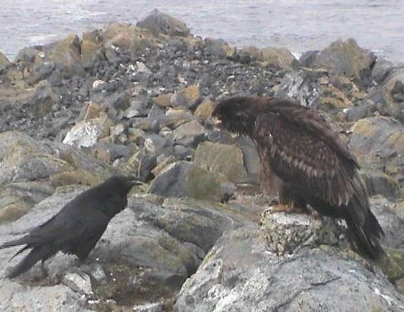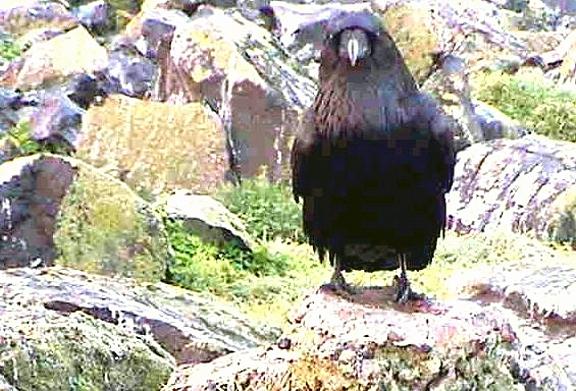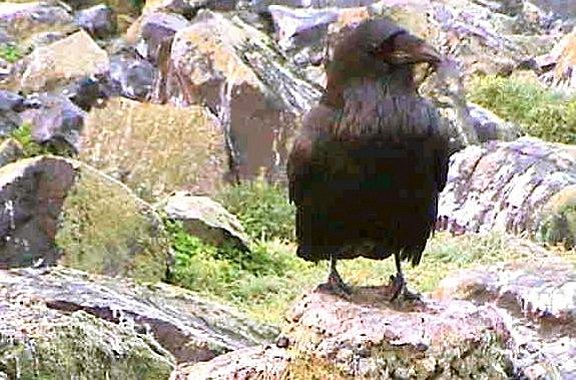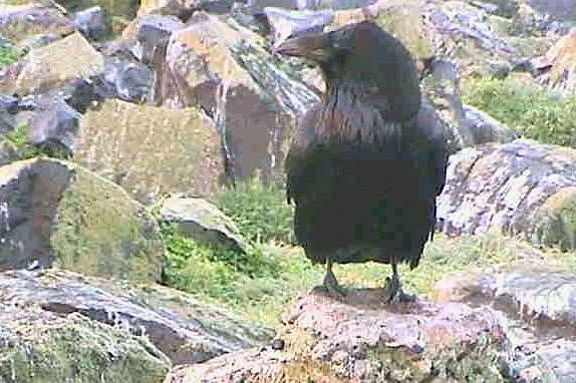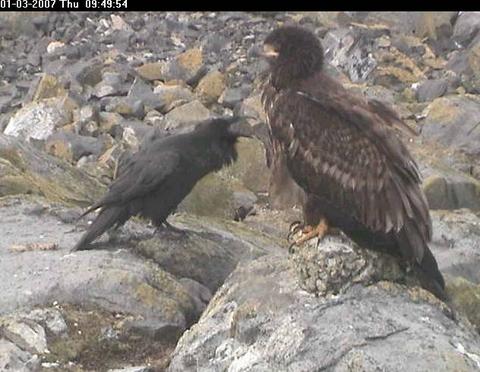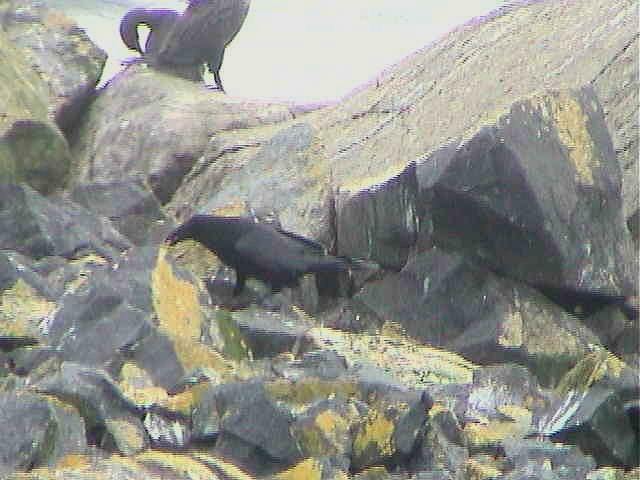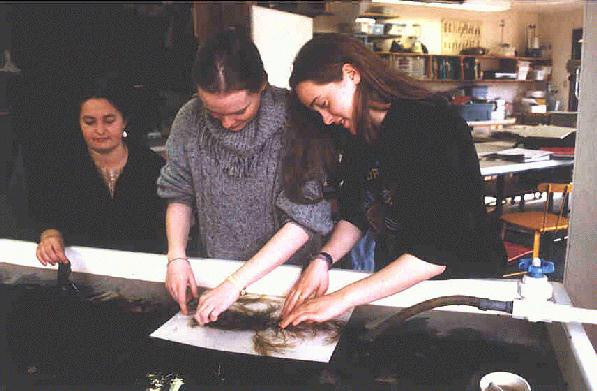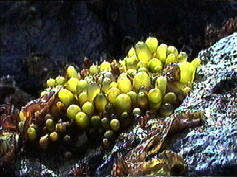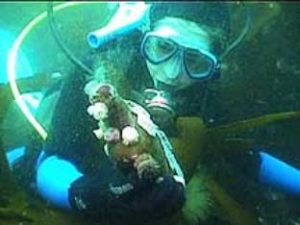PART 35.2.2.6 Disturbance by Pedestrians and Domestic Animals
Observed pedestrian effects were confined to monitoring areas on Great Race Rock. Pedestrian traffic was fairly constant throughout the year with a daily average of nearly three events (Table 9). The Reserve’s caretakers had a dog that was observed outdoors infrequently on Great Race Rock. No wildlife displacement was observed in response to the dog. A domestic cat was observed outside the house on one occasion, but no disturbance was noted. Pedestrian traffic, other than that of the researchers associated with this study, was common and occurred on most days. The Reserve’s caretakers and their family members, staff and students affiliated with LBPC (Photo 14), maintenance personnel, DFO enforcement officers, and tourists constituted the pedestrian traffic on Great Race Rock during monitored days. Although a sign-in log is maintained by LBPC to track the number of human visitors to Great Race Rock, those data were not analyzed in this study. Pedestrians displaced seal and sea lions on Great Race Rock. Pedestrian-caused disturbances typically involved: intentional clearing of northern elephant seals off the boat launch; incidental displacement of harbour seals in monitored Sub-Areas A, B, C, and H (Photo 15; Figure 20); incidental displacement of California sea lions (Figure 22) and to a lesser extent, northern sea lions in monitored Sub-Area A (near the dock); and incidental displacement of gulls throughout Great Race Rock (Table 8). On one occasion, two tourists were observed wandering through a grassy area that was being used for nesting by glaucous-winged gulls (Photo 16).

Photo 14. Students and staff from Lester B. Pearson College were frequent visitors to Great Race Rock. California
sea lions, such as those near the end of the dock, were often displaced from the vicinity by boats and people.
18 September 2003.

Photo 15. Approximately 200 harbour seals moved quickly from the shore of eastern Great Race Rock into the water immediately after being apparently startled by a high-pressure power washer being operated by a resident of the
island. This photo shows some of those animals displaced from Sub-Areas A&B. 25 September 2003

Photo 16. Two tourists wander through an active glaucous-winged gull nesting area (Sub-Area H) on Great Race
Rock; causing disturbance and risking egg destruction by trampling. 25 May 2003.
5.2.2.7 Disturbance by Aircraft
Very low numbers of aircraft were observed in or near the monitored area throughout the
monitored period (Figure 17; Photo 17). Most aircraft passed over or near the monitored area,
causing little or no apparent disturbance to wildlife (Table 8). Only one landing on the helipad on
Great Race Rock was observed. In January 2003, a Coast Guard helicopter did a brief landing in
order that we have an opportunity to observe the responses of birds and mammals. Some sea
lions, cormorants, and gulls were displaced. As reported by the ecoguardians in the 11 August
2003 entry of the Race Rocks Daily Log11 (a day on which LGL researchers were not present),
“A Coast Guard helicopter touched down several times, forcing young birds into other nests
where the adult birds pecked them apart. The disembodied heads and dismembered bodies of
seagull chicks now litter the island.” On 15 August 2003 we observed the carcasses of 6
glaucous-winged gull chicks near the eastern base of the light tower. An aerial survey of
pinnipeds was conducted by DFO from a fixed-wing aircraft occurred on 10 April 2003. That
plane circled over Race Rocks for approximately 4 minutes at an estimated minimum altitude of
150 m asl. No birds were observed to flush, nor were any pinnipeds seen going into the water as
a result.

Photo 17. Most aircraft overflights did not cause animals to leave the rocks for the water or air. 17 October 2002.
5.2.2.8 Disturbance by Boats
Kayakers were rare in the monitored area. Only birds were observed (once) flushing in response
to the approach of a kayak. Boats operated by LBPC were observed regularly throughout the
monitored period (Figure 17), and together with the LGL boat, were the only boats to regularly
dock at Race Rocks. LBPC and LGL boats displaced modest numbers of birds and pinnipeds
from the dock area during most arrivals and departures (Table 8). Displaced animals included
California sea lions in Sub-Area A; northern sea lions in Sub-Areas A, 2-5, and 8-12; cormorants
and gulls from Great Race Rock and Sub-Area 2-5. Most trips by LBPC boats were between
Pedder Bay and the dock at Great Race Rock, via routes through the east-central part of the
reserve (Figure 25). Some illegal harvesting of fish and shellfish by recreational fishermen and
recreational scuba divers, respectively was observed during the study.

Figure 25. Relative distribution of Lester B. Pearson College boats observed in Race Rocks Ecological Reserve
during monitoring sessions from October 2002 through November 2003. Numbers represent observations in each
cell expressed as a percentage of the maximum total number (57) observed in a given cell. Colour coding: 0=blank;
>0-33.3=yellow; >33.3-66.7=orange; >66.7-100=red. Islands and the Ecological Reserve boundary are indicated.
Great Race Rock is identified as “GRR”. Note that for each separate trip to the area, vessels were recorded a
maximum of once in any given cell. Refer to Figure 2 and Figure 3 for further spatial information.
Pleasure boats (Photo 18) were observed throughout the monitored period, but were most
common during summer (Figure 17). Harbour seals, sea lions, and cormorants, were all
displaced by pleasure boaters (Table 8; Figure 20; Figure 22; Figure 24). Observations indicated
that rental boats and boats used for scuba diving typically caused the most disruption because
they approached haulouts the closest and sometimes anchored (contrary to regulations) near
haulouts. Most trips by pleasure boats were in the northern part of the Reserve (Figure 26).

Figure 26. Relative distribution of pleasure boats observed in Race Rocks Ecological Reserve during monitoring
sessions from October 2002 through November 2003. Numbers represent observations in each cell expressed as a
percentage of the maximum total number (43) observed in a given cell. Colour coding: 0=blank; >0-33.3=yellow;
>33.3-66.7=orange; >66.7-100=red. Islands and the Ecological Reserve boundary are indicated. Great Race Rock is
identified as “GRR”. Note that for each separate trip to the area, vessels were recorded a maximum of once in any
given cell. Refer to Figure 2 and Figure 3 for further spatial information.


Ecotour boats constituted the greatest amount of boat traffic in the monitored area, with peak visitation rates during the height of the summer tourist season (Figure 17; Photo 19). Daily numbers of ecotour boats ranged from 0 to 43, with as many as nine present in the study area at the same time. Some ecotour boats were observed to displace harbour seals, sea lions, cormorants, and gulls (Table 8; Figure 20; Figure 22; Figure 24), but most caused no observable effects. According to VHF radio communications among ecotour boat operators on marine channels 71 and 72, the presence of ecotour boats in the monitored area was a function of the location of killer whales within the ecotour operating region. For example, if killer whales were near the San Juan Islands, few if any ecotour boats travelled to Race Rocks. If killer whales were in the vicinity of Race Rocks, operators usually toured the Reserve. If no killer whales were known to be in the region, operators toured the Reserve as a “next-best” option. Most trips by pleasure boats were in the central part of the Reserve, focused on Sub-Areas 1, 2-5, 6-7, 8-12, and northern Great Race Rock (Figure 27).

Figure 27. Relative distribution of ecotour boats observed in Race Rocks Ecological Reserve during monitoring
sessions from October 2002 through November 2003. Numbers represent observations in each cell expressed as a
percentage of the maximum total number (211) observed in a given cell. Colour coding: 0=blank; >0-33.3=yellow;
>33.3-66.7=orange; >66.7-100=red. Islands and the Ecological Reserve boundary are indicated. Great Race Rock is
identified as “GRR”. Note that for each separate trip to the area, vessels were recorded a maximum of once in any
given cell. Refer to Figure 2 and Figure 3 for further spatial information.
5.2.2.9 Disturbance by Blasting
Observations of the effects of blasting on birds and pinnipeds were made during days when at
least one of the three ranges was active. Because so few observations were made during blasting in Whirl Bay (4 days) and on Christopher Point (1 day), the value of any inference made from
those data is limited. Further, on the only day that the Christopher Point Range was active,
blasting on that range had commenced prior to our arrival at Great Race Rock, precluding any
pre-blast observations. Additionally, blasting occurred on Bentinck Island that day also (Table
1). On one of the days that Whirl Bay was active, Bentinck Island was also active.
None of the data we collected suggested that blasting in Whirl Bay had any adverse effects on bird or pinniped behaviour in the study area (Table 8, Figure 19, Figure 21, Figure 23).(See Editor’s comments in the discussion below )
Some blasts in Whirl Bay were barely audible to us outside the top of the light tower and a spray of
water was occasionally observed.
The Christopher Point Range was active on 11 days during the study period. Four to 20
ordnances were detonated per day, most of which were <100 g (Appendix 9). Blasting monitored
on Christopher Point occurred at a time (20 February 2003) when few birds and pinnipeds were
in the study area (Figure 6 through Figure 12). Four basic charges, 454 g each, were detonated
separately. The first blast we heard was clearly audible and occurred just as we were arriving at
Race Rocks. Approximately 10 northern sea lions were observed leaving a haulout, apparently in
response to the blast. Some sea lions remained in the water near Sub-Area 8-12 all day, but were
not observed to haul out again that day.
Blasting on Bentinck Island was the most frequent form of blast-related, potential disturbances
observed (Figure 18). That range was active with demolition activities throughout the study
except mid-June through early October 2003, due to an extreme fire hazard caused by prolonged
drought. Demolitions on Bentinck Island are tabulated in Appendix 8. In summary, blasting
occurred on Bentinck Island on 26 days (5.2%) of the 502 day period 13 July 2002 through 27
November 2003.
6 DISCUSSION
6.1 Relevant Legislation
A number of provincial, federal, and international acts have direct implications for the
conservation of marine life in Race Rocks Ecological Reserve (Appendix 1). Presently,
legislation contained within the federal Fisheries Act (by way of the Marine Mammal
Regulations), the Canadian Environmental Assessment Act, the Migratory Birds Convention
Act, the provincial Wildlife Act, and the provincial Ecological Reserve Act have the greatest
relevance for human-caused influences on wildlife in Race Rocks Ecological Reserve. The
federal Species at Risk Act and the Oceans Act are likely to play an increased role in the future
given the recent trend in concern about some species (e.g., killer whales and northern sea lions)
and in the event that Race Rocks achieves Marine Protected Area status.
A strict interpretation of the Fisheries Act, Migratory Birds Convention Act, the Wildlife Act and
the Ecological Reserve Act would indicate that these acts are violated regularly within Race
Rocks Ecological Reserve by factors within the Reserve (e.g., boats and people) and by factors
outside the Reserve (i.e., military exercises involving ordnance). In addition to several violations
of the tidal waters fishing regulations (under the Fisheries Act) events we witnessed during the study, human activities frequently disturb and disrupt bird and mammal activity patterns. Such factors are discussed in greater detail in subsequent sections.
Best practices of dive vessels, divers, tour operators (Province of BC 2002; Appendix 1) are
voluntary guidelines for the conduct of selected recreational activities within Race Rocks
Ecological Reserve. Those guidelines cannot eliminate adverse effects of boats on marine life,
but they can reduce them. While we did not collect detailed data on all aspects of compliance
with those guidelines, it was apparent to us that the guidelines were often not followed by boat
operators and others in the Reserve. In general, commercial tour boats conformed best to the
guidelines—perhaps due to an awareness of the guidelines and the importance of proper conduct
on the part of the boat captains. On the other hand, dive vessels and pleasure boaters were more
likely to operate in a manner inconsistent with the guidelines.
The people who live on Great Race Rock serve as “ecoguardians” in the employ of LBPC and
are charged with ensuring that the laws pertaining to the Reserve are respected. The
ecoguardians have no authority to enforce any of legislation listed above, but do attempt to
prevent or stop people from violating laws by confronting them and informing them of the
situation. The ecoguardians also report infractions and apparent infractions to the Department of
Fisheries and Oceans. Two Department of Fisheries and Oceans enforcement officers visited
Race Rocks via boat on one occasion (23 January 2003) during the days we monitored. Their
presence that day displaced two northern sea lions, 12 cormorants, and 13 gulls.
6.2 Use of Race Rocks by Marine Birds and Pinnipeds
The biophysical environment of Race Rocks provides habitat for many species (Table 3;
Appendix 5). The value of the area for foraging by marine birds appears modest compared to the
value of nearby areas outside the Reserve. The value of the area for foraging by marine
mammals is not known. We observed seals and sea lions feeding on salmon and unidentified fish
species, and harbour seals were observed once feeding on an octopus. Northern elephant seals
appear to be using the area mainly during the moulting seasons. Harbour seals use the area as a
haulout year-round, but that species does not exhibit the same degree of site selection as the three
other pinniped species. For example, harbour seals are the only pinnipeds that haul out on the
nearby shores of Bentinck and Vancouver islands. The area serves as a staging site for California
sea lions passing through Juan de Fuca Strait en route to the Strait of Georgia and Puget Sound.
Race Rocks is also a wintering, and perhaps staging area for northern sea lions. Killer whales use
the area occasionally as part of their movement corridor and possibly for foraging though we
made no such observations.
The fact that Race Rocks provides highly suitable habitat for marine birds and pinnipeds is
indisputable. However, an assessment of the extent to which Race Rocks provides important or
critical habitat for any given species is not so straightforward. According to the Species at Risk
Act:
“Critical habitat is habitat which is necessary for the survival or recovery of a
listed wildlife species and that is identified as the species’ critical habitat in the
recovery strategy or in an action plan for the species.” For species that are not listed under the Species at Risk Act, we use the term critical habitat to
refer to any habitat that is essential to the life processes of a species and that in the absence of
that habitat, the population would suffer detectable adverse effects.
In this context, it is not clear to what extent the population sizes of marine birds and pinnipeds
that presently occur in or that migrate through or over the waters of Juan de Fuca Strait and the
Strait of Georgia would differ in the absence of the exposed land in Race Rocks Ecological
Reserve. For example, while Race Rocks provides harbour seals, pigeon guillemots, black
oystercatchers, and glaucous-winged gulls with suitable breeding habitat, such habitat occurs
elsewhere in the marine areas of the Georgia Depression Ecoprovince (e.g., Campbell et al 1990
a, b; Jeffries et al. 2000; Evenson et al. 2001; Chatwin et al. 2002; Sullivan et al. 2002).
However, there are few if any areas like Race Rocks that provide suitable breeding habitat and
that are presently unoccupied. As such, the loss of Race Rocks likely could result in reduced
population sizes for species that breed there.
6.2.1 Birds
Gulls and cormorants, the most abundant birds in Race Rocks Ecological Reserve, typically used
the area as a resting site from which they would fly to marine feeding areas within a few
kilometres. Depending on the species, the Reserve provides breeding, staging, wintering, and
year-round habitat. The area provides nesting habitat for glaucous-winged gulls, pigeon
guillemots, and black oystercatchers, and serves as migration/staging and wintering habitat for
several species of gulls and three species of cormorants. Most use by shorebirds appears to be for
migration/staging.
6.2.2 Northern Elephant Seal
Use of Race Rocks by northern elephant seals has increased substantially in recent years, most
likely as a result of the species dramatic recovery from near extinction in the early 20th century
and the species’ tendency to be highly migratory. The peak number (22) of adults and subadults
observed in spring 2003 may well represent a record number for BC during recorded history. In
recent years, northern elephant seal pups have been sighted at haulouts in the inland waters of
Washington State (Jeffries et al. 2000) and at least three are reported to have been born there
(Hayward 2003). It is likely that numbers of northern elephant seals using Race Rocks will
continue to increase. Given the recent records of breeding in Washington (Hayward 2003), Race
Rocks might be used for pupping, though it is unlikely that it would ever become a breeding
rookery of any significance—especially as long as there is infrastructure on Great Race Rock.
The primary value of Race Rocks for this species will likely remain as a haulout for a modest
number of animals during seasonal moulting periods, but because such a small fraction of the
population occurs there, it is unlikely that the Reserve provides the species with any critical
habitat.
6.2.3 Harbour Seal
Harbour seals occur year-round at Race Rocks, and use the area for all aspects of their life
history. Whereas northern elephant seals and sea lions moved to locations above the high tide
level on haulouts in the study area during flood tides, harbour seals remained confined to
intertidal areas where they were displaced by tides, swells and waves. Thus, their numbers exhibited considerably greater fluctuations at hourly, daily, and seasonal time scales compared to
other pinnipeds in the area. Numbers hauled out in the study area peaked during the summer
pupping and moulting periods, which is consistent with other research on the species (e.g.,
Jeffries et al. 2003).
Numbers of harbour seals have rebounded since the end of Canadian and U.S. government-
sponsored culling programs prior to the early 1970s. The result of this increase is that numbers of
harbour seals in the Georgia Depression Ecoprovince are likely as high as they were prior to the
onset of the culls and may be at or very near the predicted carrying capacity of local habitats. For
example, Olesiuk et al. (1990) estimated that from 1973-1987 (the period they examined)
harbour seals in British Columbian waters had a mean annual rate of increase of 12.5%, resulting
in nearly a 10-fold increase in numbers. Those authors speculated that 12.5% annual population
growth was close to the maximum intrinsic growth rate of the species. Similarly, Jeffries et al.
(2003) calculated that harbour seals in nearby Washington State waters increased 7-10 fold
between 1970 and 1999 and that the population of harbour seals in Washington State could
decline by up to 20% and still be above the maximum net productivity level for the population.
Harbour seals are known to move across the international boundary in the Georgia Depression
Ecoprovince (Huber et al 1993, cited in Calambokidis and Baird 1994). Clearly, there are no
reasons for concern about local harbour seal conservation based on population status alone.
Numerically speaking, the local population is in good shape and there is an abundance of high-
suitability habitat elsewhere in the Georgia Depression Ecoprovince (Jeffreies et al. 2000). Thus,
it is unlikely that Race Rocks Ecological Reserve presently provides critical habitat for this
species.
Bioaccumulation of anthropogenic toxins and their effects on immune-responses and fertility of
harbour seals is a subject matter that is receiving increased attention—particularly because of
parallel concerns about killer whales (see Calambokidis et al. 1994 and references therein).
However, we are not aware of any empirical data that presently indicate that toxins are adversely
affecting total numbers of harbour seals in the Georgia Depression Ecoprovince.
6.2.4 California Sea Lion
The number of California sea lions in British Columbian coastal waters has increased
substantially during the latter 20th century, particularly since 1980 (Bigg 1988a). The species
does not breed in BC, nor are there any records that it did so in the past. This increase is also the
result of a rebound in numbers following the termination of government-sponsored culls. Bigg
(1988a) reported that California sea lions were not present on Race Rocks prior to 1965.
Numbers have increased since then. P. Olesiuk (pers. comm. 2002) indicated that California sea
lions are expanding their non-breeding range northward within BC. Little is known of this
expansion, or of its present or future impacts on other marine resources. The patterns of
abundance at Race Rocks observed during this study indicate that the value of Race Rocks for
this species is primarily as a migration/staging area. California sea lions migrate to BC from
southern waters (e.g., California) then move between various haulouts and feeding areas,
including Race Rocks. Range expansion to the north may also explain the apparent decline in
peak numbers occurring at Race Rocks. An apparent increase in the use of the Victoria
waterfront and Trial Island haulout by California sea lions may partially explain an apparent
decline in use of Race Rocks by that species in autumn 2002. For example, data in Bigg (1988a) indicate that numbers of California sea lions at Race Rocks during February (not the peak month
according to recent data) increased from 13 in 1978 to 320 in 1982, to 799 in 1984. Demarchi et
al. (1998) reported a peak count of 836 in October 1997. In the present study, peak counts were
considerably lower at 244 individuals in September 2003. It is unlikely that Race Rocks
Ecological Reserve presently serves as critical habitat for this species.
6.2.5 Northern Sea Lion
The number of northern sea lions in British Columbian coastal waters has increased substantially
during the latter 20th century, and in particular, since 1980 (Bigg 1988b). This increase is also the
result of a rebound in numbers following the termination of government-sponsored culls. Recent
trends in the abundance of northern sea lions suggest an average annual rate of increase of 3.2%,
resulting in a population size that is more than double what it was when the species was
protected in 1970 (P. Olesiuk, unpublished data). No new breeding rookeries have been
established in recent years. Numbers of northern sea lions using Race Rocks have also increased
since culling ended. For example, Bigg (1988b) indicated that prior to 1965, northern sea lions
had not been recorded at Race Rocks. In 1971, no more than 71 northern sea lions were recorded
there. In 2002 we recorded a maximum count of 528 and in 2003, 555 individuals (Figure 12).
Observations made during this study indicate that numbers of northern sea lions at Race Rocks
fluctuate seasonally. Our findings concur with those of Bigg (1988b), who identified Race Rocks
as a winter haulout. Adult males are first to arrive in late summer. Females, subadults, and young
arrive later, with total numbers peaking in early winter. Though pups born at distant rookeries
were seen at Race Rocks, nursing behaviour was observed only occasionally. As winter
progressed animals began to leave the area and by late February few if any were present. This
pattern indicates that the area is used as a wintering site and may also serve as a
migration/staging area for animals moving between the Strait of Georgia, Juan de Fuca Strait,
and outer coastal areas north and south of Juan de Fuca Strait.
Of the four species of pinnipeds that commonly occur at Race Rocks, only the northern sea lion
might be considered to be presently using the area as critical habitat. This opinion is predicated
on the following points: 1) the Western Stock of northern sea lions has exhibited a dramatic
decline in numbers in recent decades for unknown reasons. For the same reason(s), it is possible
that the Eastern Stock could also decline in the future; 2) Despite data suggesting that the
population is growing at a modest rate, the northern sea lion has recently been up-graded by
COSEWIC to a species of Special Concern and has been Red-Listed by the Province for several
years.
6.3 Effects of Natural and Human-Caused Disturbance
Animals respond to changes in environmental conditions for many different reasons and in many
different ways. This study focuses on only two responses to disturbance: increased activity
(pinnipeds only) and displacement from a terrestrial site to the air (birds) or water (birds and
pinnipeds). During this study it was clear that Race Rocks Ecological Reserve is exposed to
substantial fluctuations in many natural factors—often over very short time scales. Factors
operating at or below a daily time scale, including changes in tide and swell height, blasting on
Bentinck Island and human-caused disturbances on Great Race Rock exerted strong influences on the abundance of some species. None of the data we collected suggested that blasting in Whirl Bay had any effects on bird or pinniped behaviour in the study area. Although Demarchi et al. (1998) did observe northern sea lions responding to blasts in Whirl Bay, C-4 charges detonated during that study were considerably larger (thus, louder) than those used on the range during this
study. At best, some of the blasts in Whirl Bay were barely audible to us outside the top of the
light tower and a spray of water was occasionally observed. Insufficient monitoring during days
when the Christopher Point Range was active limits our ability to draw conclusions about the
effects of such blasting on birds and pinnipeds at Race Rocks. It should be noted that explosions
in WQ are not the only shore-based ones with the potential to disturb marine birds and pinnipeds
near southern Vancouver Island. The fireworks display at Butchart Gardens on Saanich Inlet
(approximately 32 km to the north) each Saturday evening during summer results in a
considerable amount of explosives-generated noise near the marine environment. Additionally,
there are fireworks associated with Canada Day, BC Day, and Halloween. Blasting in rock
quarries and for highway construction also occur periodically on southern Vancouver Island. The
potential for the foregoing to disturb marine wildlife is substantial, though the actual effects are
unknown.
| Editor’s Note: This discussion of the results of DND Blasting is somewhat problematic and perhaps the result of too few observations by the research team when actual blasting was taking place. It must be noted that most of the blasting events occurring during the year of the study were not observed and recorded by the researchers. The following two references point to some archival footage that may lead to different conclusions:
https://www.racerocks.ca/before-and-after-images-of-dnd-blasting-effects/ DND Blasting Disturbs sea lions DND Demolition Blasts affects Mammals and Birds at Race Rocks |
The purpose of examining how marine birds and pinnipeds at Race Rocks responded to changing
environmental conditions and human-caused disturbances is to provide a better understanding of
the local ecological environment, and allow management actions to be sensitive to normal
processes. There are many reasons why animals respond to disturbances. Responses to
disturbance by birds and pinnipeds at Race Rocks are most likely the result of learning
experiences elsewhere or simply the result of reactions to sudden changes in the environment.
For example, not long ago, seals and sea lions were hunted extensively as vermin. Outside Race
Rocks Ecological Reserve animals continue to be shot and shot at for First Nations’ harvesting,
animal control at aquaculture facilities (Hume 2000), and as perceived pests and competitors by
commercial fishermen. Gulls and cormorants are also shot and shot at for purposes of wildlife
control at some airports and may be shot at by waterfowl hunters. As long as animals are
persecuted with firearms they can be expected to associate loud noises with danger; responding
by becoming alert and moving to the relative safety of the air or water. Such behaviour would be
expected even though animals are not shot or shot at in the Race Rocks Ecological Reserve to
our knowledge.
Humans and their actions have the potential to disturb wildlife. The following classification is
based on Wilson and Shackleton (2001), who described 3 theoretical classes of animal responses
to disturbance:
- 1. Short-term acute behaviours—include responses that happen immediately in response to
a disturbance. They include: increased vigilance, fleeing, group dissolution, mother-
offspring separation, and injury.
2. Medium-term chronic behaviours—include behavioural responses that occur over a
period of days to months in response to disturbance. An example is temporary or
permanent range abandonment.
3. Long-term demographic consequences—are likely the most important aspect of matters
surrounding wildlife disturbance. Demographic consequences include: population
decline, extirpation and extinction.
Marine birds and pinnipeds at Race Rocks are exposed to a number of different disturbance
stimuli that alter normal behaviour patterns. The fact that human activities disturb wildlife does
not in itself provide a basis to ban such activities. Indeed, if that were the case, no people or
boats would be permitted in the Race Rocks Ecological Reserve without authorization. If
disturbances have no consequences for the population, or even if the population consequences
are sustainable, restricting human activities for the sake of preventing disturbance is likely to
have negative social consequences that are out of proportion to the impacts that are being
avoided or mitigated.
It is necessary to place the disturbance of marine life at Race Rocks into context in order to begin
to assess the significance of any adverse effects. The effects of disturbance can be viewed in a
hierarchical framework where effects on a population or species range from benign to severe
(Figure 28). Consequences of disturbance at the extremes of the range are obvious—stimuli that
do not elicit reactions are of no consequence while those that cause extirpation or extinction are
of great concern. Quantifying the existence and significance of the effects in-between these
extremes poses a far greater challenge. The US National Marine Fisheries Service
(50CFR216.103)12 defines a negligible impact as:
- “ …an impact resulting from the specified activity that cannot be reasonably
expected to, and is not reasonably likely to, adversely affect the species or stock
through effects on annual rates of recruitment or survival.”
Ecoguardians resident on Great Race Rock provide a measure of protection for marine life in the Reserve, but the presence of inhabitants and infrastructure is not without impacts. In recognizing
some of those impacts, efforts are being taken to avoid or mitigate them (Province of BC 2002).
The infrastructure and various activities required to support the ecoguardians and the light station
undoubtedly affects use of the area by birds and pinnipeds and poses some risks to animals using
the area. Several potential effects are summarized below.
- • Spatial footprint—Buildings and infrastructure eliminate or restrict use by some species. For example, the net area of grassy sites available for glaucous-winged gull breeding is reduced by a substantial amount.
• Accessibility—The presence of a dock and boat launch makes Great Race Rock
accessible to humans via boats. In the absence of those structures, boat access would be very difficult and extremely hazardous. The presence of a helipad provides safe helicopter access, however the island would still be accessible without it.
• Disturbance and displacement—The presence of people and active machinery outside the buildings often disturbs and displaces birds and pinnipeds.
• Noise pollution—Diesel generators operating during the study period did so without a properly functioning muffler, resulting in high levels of noise on the south side of Great Race Rock.
• Risk of fuel spill—Diesel required for the generators poses a risk of spill during fuel
transfer to the island and during storage and use on the island.

Figure 28. Conceptual model of the hierarchical effects of exposing a wildlife species to a non-directly lethal visual
or aural disturbance stimulus.
6.3.1 Birds
Of the birds observed on the rocks of the monitored area, cormorants appeared to be the most
sensitive to human-caused disturbances. Cormorants sometimes took to the water or air following a blast or close approach of a boat, often simply moving to another part of the study
area. The reduced probability of displacement in response to a blast on days when the
temperature was higher might have implied that warm weather was particularly valuable for
thermoregulation and that birds were reluctant to lose opportunities to dry their plumage or to
remain dry. The apparent avoidance of Great Race Rock by Brandt’s cormorants during winter
may suggest that that species is particularly sensitive to disturbances by people. However,
because cormorant attendance at the rocky areas of Race Rocks is normally very dynamic as
individuals move between terrestrial roosting areas and marine feeding areas, it is not possible to
assess the extent to which such disturbances adversely affect cormorants. Their continued
presence in the study area indicates that any adverse effects of disturbance are likely modest.
Gulls were very sensitive to overflights by bald eagles and often reacted by taking flight. In most
instances, gulls settled back within seconds or minutes of the disturbance. During the breeding
season, glaucous-winged gulls were particularly sensitive to the presence of people on Great
Race Rock and often acted very aggressively, dive-bombing at and defecating on anyone that
approached within a few meters of a nest. The influence of swell height on gull abundance at
Race Rocks (higher swells resulted in more gulls in the study area) might have reflected reduced
foraging due to unsuitable off-shore feeding conditions, reduced areas for loafing, and/or other
factors. It is also possible that some gulls moved to Race Rocks from the vicinity of Bentinck
Island during days when blasting occurred there.
Adult pigeon guillemots breeding on Great Race Rock commonly roosted on the periphery of the
island and on the dock during the morning. They were often flushed by boats and people, though
the birds usually returned soon after the disturbance had passed.
The apparent avoidance of Great Race Rock by bald eagles and Brandt’s cormorants is believed
to be in response to the presence of humans and the sensitivity of those species to disturbance.
However, we doubt that the maximum numbers of these species in the Reserve would be
significantly different in the absence of humans and infrastructure on Great Race Rock because
other resting areas exist in the Reserve.
Sullivan et al. (2002) speculated that disturbance and predation by bald eagles at glaucous-
winged gull colonies might be important factors contributing to the observed decline in the
reproductive output of those gulls in the Southern Strait of Georgia. Chatwin et al. (2002) made
similar conclusions regarding bald eagle impacts on pelagic and double-crested cormorant
colonies. Concerns about recent declines in numbers of glaucous-winged gulls and pelagic
cormorants at specific breeding sites in the southern Strait of Georgia may place increased
importance on the value of Great Race Rock as a breeding area, particularly for glaucous-winged
gulls. Because so few pelagic cormorants breed at Race Rocks and because breeding is sporadic
there, it is unlikely the area provides the species with critical nesting habitat. The situation at
Great Race Rock poses somewhat of a dilemma in this regard because on one hand, the presence
of buildings, infrastructure and people substantially reduces the area of land available for nesting
by glaucous-winged gulls. On the other hand, we suspect that the presence of people serves to
deter bald eagles from using Great Race Rock (see Table 2), thereby affording a measure of
protection to the gulls that do breed there. Race Rocks could be providing glaucous-winged gulls
with important nesting habitat that is relatively free of bald eagle disturbance. If other colonies
continue to decline, the importance of Race Rocks might increase in the future. However, it is unlikely that the Reserve presently provides critical habitat for glaucous-winged gulls. Further, while recent declines in numbers breeding at some colonies have been noted (Sullivan et al. 2002), the breeding population in the Georgia Depression Ecoprovince is believed to have doubled between 1960 and 1986 (Mahaffy et al. 1994). Expanded food availability at landfills and the fact that the species nests successfully on a number of human-made structures (e.g.buildings and structures associated with port facilities) have likely contributed to the increase (Vermeer et al. 1988).
6.3.2 Northern Elephant Seal
Of all pinniped species that occur at Race Rocks, northern elephant seals were the most tolerant
of any forms of disturbance we observed. Holst and Greene (2002) also found that military
training activities that generated noise elicited few noticeable reactions from northern elephant
seals. We did not detect any meaningful responses of northern elephant seals to either natural
factors or blasting. It is not known whether the decline in numbers of northern elephant seals that
occurred in the weeks following blasting on Bentinck Island in early May 2003 represented a
reaction to blasting or not. However, given the species’ lack of responses to blasting on a daily
time scale and the fact that animals hauled out at that time of year are expected to depart haulouts
following the moult, the decline was likely coincidental with blasting. The significance of the
complex interaction term of tide height, swell height, and blasting (Table 4) might reflect
increased afternoon counts of individuals that were present in the morning, but that were
previously hidden from view in the morning by sea lions that moved or departed the area in the
afternoon. It is also possible that the significance of the term is spurious. In any event, we found
nothing to suggest that northern elephant seals in the study area were adversely affected by
environmental factors or blasting in a meaningful way. Considering this and the status
information discussed in section 6.2.2, at present, no significant adverse effects stemming from
single or cumulative disturbance types on the regional population of this species are expected to
originate in or immediately adjacent to the study area.
6.3.3 Harbour Seal
In situations where most harbour seal activity did not proceed to the point of displacement,
blasting on Bentinck Island was the only factor that caused noticeable increases in harbour seal
activity (i.e., moving from a head-down to head-up position). Other factors such as pedestrians
caused increased activity. However, because animals moved quickly to the water in such events,
the sampling data do not reflect this as no counts were made between the time that the
disturbance occurred and the onset of displacement. Aside from seasonal effects, the abundance
of harbour seals in the study area was dictated primarily by tide height. As shown in Photo 11,
harbour seals were particularly sensitive to changes in tidal height because they selected
primarily the intertidal reaches of the study area for hauling out. Rising tides displaced harbour
seals from haulouts, while falling tides provided opportunities for hauling out. Harbour seals
haul out year-round, but the peak in this behaviour that occurs in the summer corresponds to two
biologically important events. First, harbour seals give birth while on land where mother-pup
pairs spend 90-100% of their time during the 4-6 week nursing period (Huber et al. 2001).
Second, each summer harbour seals moult (shed) their fur and grow a new coat. The fact that
harbour seals moult in the summer and that they haul out to do so likely reflects
thermoregulatory constraints (Ling et al. 1974). By hauling out, moulting seals reduce heat loss at a time when their coat provides the least amount of insulation. Also, basking in the summer
sun and on sun-warmed substrates heats the skin surface, likely increasing the metabolic rate of
hair follicles, thereby increasing the rate of hair growth. Evidence that thermal constraints affect
haulout behaviour is provided by seal responses during days when blasting occurred on Bentinck
Island. While greater numbers of projects (blasts) per run resulted in increased probability of
displacement, both swell height and air temperature also appeared to affect the probability of
displacement to the water. Following blasts on Bentinck Island, harbour seals were more likely
to go into the water when the air temperature was higher and the swell height was lower (Table
5). On cooler days with higher swells, harbour seals were more likely to remain hauled-out after
a disturbance stimulus possibly because of a relatively greater need for dermal warming at that
time. Despite variable reactions to individual blasting events, overall changes in the numbers of
harbour seals hauled out in the study area appeared to be adversely affected by blasting on
Bentinck Island, but the effect was not statistically significant. This was most likely because of
two reasons: 1) the dramatic effects of increased tide height masked any effects of blasting, and
2) small sample sizes. Although we were unable to observe seal responses to blasting during
summer because of a military range closure, the same pattern of declining abundance in response
to increased tide heights would have likely masked any effects of blasting. Data shown in Figure
14 suggest that with increased sample sizes, the effects of blasting on Bentinck Island would
likely have become statistically significant.
Harbour seals hauled out on Great Race Rock were usually very skittish in the presence of
humans. Seals near the dock (Photo 1; Sub-Areas A&H) seldom remained hauled out when boats
or people approached. Those on the east side of Great Race Rock (Sub-Areas B-D) were quick to
respond to human-caused disturbances that resulted in noise (e.g., an aluminum ladder dropped
on a concrete walkway, machinery starting up, close approaches by pedestrians). For example,
approximately 200 harbour seals moved quickly from the shore of eastern Great Race Rock into
the water immediately after a gasoline-powered high-pressure power washer started near the
caretaker’s residence.
Unlike the other pinnipeds in the study area, harbour seals do not undertake long-distance
migrations. A non-migratory life strategy is more conducive to a greater degree of familiarity
with certain aspects of an animal’s home range than is a migratory one. Harbour seals are long-
lived (up to 30 years; Bigg 1981) and individual harbour seals probably stay in the vicinity of the
study area year-round. Because the study area has been exposed to blasting, boats, and
pedestrians for many years, it is not unreasonable to assume that some harbour seals have
habituated somewhat to some disturbances there. The ability of harbour seals to habituate to
disturbances is supported by the fact that they are easily kept in captivity and exhibit a rapid
adjustment under restrained conditions (Bigg 1981). Harbour seals at Race Rocks, although
skittish in the presence of people, are more tolerant of close approaches by humans than are
harbour seals in areas where they are shot and shot at (M. Demarchi pers. obs.).
Harbour seals in Race Rocks Ecological Reserve exhibited short-term acute behaviours in
response to disturbances resulting from natural factors, blasting, boats, and pedestrians. Holst
and Greene (2003) made similar observations of harbour seals during noisy military training
exercises in California. The fact that such responses occur in response to human activities
indicates that disturbance (in the context of the Fisheries Act; or “takes” in the context of the US
Marine Mammal Protection Act) occurs. However, it is unlikely that any seals are seriously injured by any of the disturbances, nor is it likely that mother-pup pairs are permanently
separated resulting in dead pups, in a manner reported by Johnson (1977). We observed three
dead adult/subadult harbour seals on the shore of Great Race Rock, but did not observe any dead
pups during the study. Considering this and the status information discussed in section 6.2.3, no
significant adverse effects stemming from single or cumulative disturbance types on the regional
population of this species are expected to originate in or immediately adjacent to the study area.
6.3.4 California Sea Lion
Blasting on Bentinck Island and boat traffic increased the activity levels of California sea lions
hauled out in the study area. Pedestrians on Great Race Rock also caused increases in activity,
but usually fewer than ten animals were involved. Aside from seasonal effects, the abundance of
California sea lions in the study area was dictated primarily by swell height. As swell height
increased, so did the probability of a decline in abundance. According to the pattern of declining
abundance observed in autumn 2003 prior to blasting, the decline in numbers of California sea
lions following blasting in early October 2002 was more likely the result of natural migration
patterns than displacement due to disturbance (Figure 11).
Blasting on Bentinck Island, pleasure boats, and pedestrians all displaced California sea lions to
the water. Holst and Greene (2003) made similar observations of California sea lions during
noisy military training exercises in California. California sea lions were increasingly likely to be
displaced due to blasting on Bentinck Island with greater numbers of projects in a run and when
wind directions acted to amplify blast noise. Tide height did not appear to influence the
abundance of hauled-out California sea lions because they typically hauled out above the
intertidal zone. Pleasure boats that approached haulouts too closely were observed to displace
animals. California sea lions hauled out on Great Race Rock usually tolerated the presence of
humans nearby, but there was consistent displacement involving animals moving off the dock
and nearby shore in response to boats and pedestrians. It was occasionally possible to dock a
boat without displacing all individuals nearby, possibly because those animals had habituated to
such disturbances (Photo 14).
California sea lions in Race Rocks Ecological Reserve exhibited short-term acute behaviours in
response to disturbances resulting from natural factors, blasting, boats, and pedestrians. Such
responses to human activities indicates that disturbance (in the context of the Fisheries Act; or
“takes” in the context of the US Marine Mammal Protection Act) occurs. However, it is unlikely
that any animals are seriously injured by any of the disturbances. Considering this and the status
information discussed in section 6.2.4, at present, no significant adverse effects stemming from
single or cumulative disturbance types on the regional population of this species are expected to
originate in or immediately adjacent to the study area.
6.3.5 Northern Sea Lion
Blasting on Bentinck Island increased activity of hauled-out northern sea lions throughout the
study area. Animals in Sub-Areas 2-5, 6-7, 8-12, and 13 (i.e., closer to Bentinck Island) were
particularly sensitive. Animals in those sub-areas were also exposed to the greatest amounts of
boat traffic. Despite this, we did not observe any obvious shifts in animal distribution to areas
that were not as prone to disturbance by blasting and boats (e.g., Sub-Areas 14; 15-24).
Pedestrians on Great Race Rock also caused increases in activity, but usually fewer than ten animals were involved. Aside from seasonal effects, the abundance of northern sea lions in the
study area did not appear to be predictably influenced by any given factor. On several occasions,
northern sea lion activity increased substantially and many animals moved to the water, yet we
could not clearly identify any disturbance stimuli. In one such case, the only apparent cause was
the sudden appearance of the sun as a cloud moved past. Such behaviours have been observed by
others (e.g., Porter 1997). We speculate that those events are likely triggered by the actions of
one animal that, for whatever reason, panics. The effects of that animal cascade through the
group, prompting similar behaviours in others. Such events are likely inevitable for species that
occur in groups where such groups confer a measure of safety in that danger does not have to be
detected by every animal in order for an appropriate response to occur.
Disturbances caused by blasting on Bentinck Island, pleasure boats, and pedestrians all displaced
northern sea lions to the water. Of all species monitored, the northern sea lion was most sensitive
to blasting on Bentinck Island. During 43 demolition runs, 1 animal was observed to be
displaced to the water in response almost 91% of the time. In a few instances, haulouts were
completely cleared of northern sea lions. Because of this high rate of response, no natural factors
were found to significantly affect animal responses. Tide height did not appear to influence the
abundance of northern sea lions because, like northern elephant seals and California sea lions,
they typically hauled out above the intertidal zone or moved to higher points on the haulout
during flood tides. Pleasure boats that approached haulouts too closely were observed to displace
northern sea lions. Northern sea lions hauled out on Great Race Rock were less tolerant of the
presence of humans nearby, as there was consistent displacement involving animals moving off
the dock in response to boats and pedestrians.
The decline of the Western Stock of northern sea lions in the Gulf of Alaska and Aleutian Islands
in the late 1970s and 1990s is presently a matter of intense research13. Investigations into the
causes of the decline involve a number of hypotheses, including nutritional stress (Trites and
Donnelly 2003), human-caused disturbance (L Kucey14, in progress), and predation by killer
whales following a decline in whale prey as a result of excessive commercial whaling in the past
(Springer et al. 2003). While there is presently no consensus on the cause(s) of the decline,
Pascual and Adkinson (1994) concluded that only a long-term change in the environment or
novel catastrophe would be capable of causing the magnitude of the observed decline. Pascual
and Adkinson (1994) note the difficulty in eliminating human-caused disturbance as a causative
factor because human activity in the region has increased simultaneously with the decline in sea
lion numbers. However, if disturbance was the primary cause, one should expect the Eastern
Stock (of which animals at Race Rocks are part) to have exhibited a similar, if not more
pronounced decline because of perhaps an even greater increase in human activities within their
range. Springer et al. (2003) favour the predation hypothesis over others such as nutritional stress
and disturbance for several reasons. According to them:
- “The absence of beach-stranded [northern sea lion] carcasses is one of the most
intriguing and perplexing features of these declines. Sea otter mortality from
nutritional limitation, disease, and pollution typically results in large numbers of
stranded carcasses. Pinnipeds often sink when killed at sea, although many such
individuals float to the surface and wash ashore later. Malnourished or diseased
pinnipeds commonly haul out to die. The near absence of stranded carcasses and
a lack of reports of distressed animals on beaches or of emaciated animals taken
by subsistence hunters thus are most consistent with losses to predators.”
13 refer to: http://nmml.afsc.noaa.gov/AlaskaEcosystems/sslhome/StellerHome.html
14 refer to: http://www.marinemammal.org/MMRU/laura.html
While we did not examine body condition of northern sea lions closely, in our opinion, the
individuals at Race Rocks did not exhibit any signs of malnutrition (e.g., lethargic behaviour,
emaciated bodies with visible bone structure).
Northern sea lions in Race Rocks Ecological Reserve exhibited short-term acute behaviours in
response to disturbances resulting from natural factors, blasting, boats, and pedestrians. The fact
that such responses occur in response to human activities indicates that disturbance (in the
context of the Fisheries Act; or “takes” in the context of the US Marine Mammal Protection Act)
occurs. Although we observed a few subadult males with cuts and patches of missing skin, such
injuries likely resulted from fights with each other. It is unlikely that any animals are seriously
injured by any of the disturbances. Despite the species’ sensitivity to blasting, displaced
individuals typically began returning to the haulout within minutes or hours of the disturbance,
indicating that they were not displaced from the study area or very far from it (this study;
Demarchi et al. 1998). The fact that Race Rocks is not a rookery for this species means that the
risks of pup abandonment or trampling due to blast-caused disturbances (e.g., stampedes) are
very low. Considering the foregoing and the status information discussed in section 6.2.5, no
significant adverse effects stemming from single or cumulative disturbance types on the regional
population of this species are expected to originate in or immediately adjacent to the study area.
7 CONCLUSIONS
The fact that Race Rocks provides highly suitable habitat for marine birds and pinnipeds is
indisputable. However, the Northern Sea Lion (COSEWIC, Special Concern; Conservation Data
Centre, Red Listed) is the only species that could be reasonably expected to pose any local
conservation concerns at Race Rocks at present. The black oystercatcher (COSEWIC, Not
Listed; Conservation Data Centre, Yellow Listed) might become a concern in the future at Race
Rocks due to the relatively low number of breeding pairs in the province.
Marine birds and pinnipeds at Race Rocks are exposed to a number of different disturbance
stimuli that alter normal behaviour patterns. The fact that human activities disturb wildlife does
not in itself provide a basis to ban such activities. Indeed, if that were the case, no people or
boats would be permitted in the Race Rocks Ecological Reserve without authorization. If
disturbances have no consequences for the population, or even if the population consequences are sustainable, restricting human activities for the sake of preventing disturbance is likely to have negative social and other consequences that are out of proportion to the impacts that are being avoided or mitigated.
According to the findings of this study, no significant adverse effects stemming from single or
cumulative disturbance types on the regional populations of any species of marine bird or
pinniped at Race Rocks Ecological Reserve are expected to presently originate in, or
immediately adjacent to, the study area. This is consistent with Holst and Greene (2003), who
concluded that, despite eliciting behavioural responses, noisy military training exercises in
California only had minor, short-term, and localized, effects on pinnipeds, with no consequences
for the pinniped populations.
.15. During the study, we observed three dead harbour seals, one dead northern sea lion, and two California sea lions with potentially life-threatening internal injuries. Both California sea lions were emaciated and exhibited lethargic, abnormal behaviours. A number (<20) of other sea lions were observed with various anthropogenic materials (e.g., nets, rope and other closed-loop materials, fishing gear) around their heads, necks or torsos, or in the case of fishing gear, hanging from their mouths. While some of those animals would likely die from their entanglement, none appeared to be near-death when we observed them. One subadult male northern elephant seal was severely cut up, but was observed several months later, mostly healed. One male California sea lion had a severe injury to one front flipper. Several northern sea lion males were observed with what appeared to be non-life- threatening dermal wounds (i.e., torn or missing skin) on their chests.

